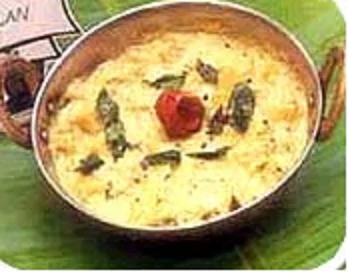Kozhukkatta, also known as modak or sweet dumplings, is a popular South Indian delicacy enjoyed during festivals like Ganesh Chaturthi and Onam. These delightful treats boast a soft rice flour dough encasing a sweet and creamy coconut filling, steamed to perfection.

The
origins of kozhukkatta can be traced back centuries, possibly to the ancient
Tamil kingdoms. They are believed to be offerings to various deities,
particularly Lord Ganesha, who is said to have a fondness for sweets. Over
time, kozhukkatta evolved into a cherished culinary tradition, passed down
through generations and prepared with love during festive occasions.
Variations and Flavors:
While the basic concept remains the same, kozhukkatta comes in a variety of regional variations, each boasting its unique twist. Here's a glimpse into two popular styles:
Thrissur Kozhukkatta: Known for its melt-in-your-mouth filling, featuring
roasted coconut for a richer flavor and less jaggery for a subtler sweetness.
The dough is thicker and more elastic, resulting in larger, disc-shaped
dumplings often left plain or adorned with a simple cashew nut.
Calicut
Kozhukkatta: This version features a sweeter and more syrupy filling with a
generous amount of jaggery. The dough is thinner and delicate, giving the
dumplings a lighter and fluffier texture. They are typically smaller and
rounder, often decorated with intricate designs using edible pastes or chopped
nuts and fruits.
Bringing the Sweetness Home:
Ready to whip up a batch of your own kozhukkatta? Here's a basic recipe to get you started:
Here's a recipe for steamed kozhukkatta, the delightful South Indian dumplings filled with sweet coconut goodness:
Ingredients:
For the filling:
1
cup grated fresh coconut
1/2
cup jaggery, grated or powdered
1/4
teaspoon cardamom powder
1/8
teaspoon grated nutmeg (optional)
For the dough:
1
cup rice flour
1/4
cup water
1/4
teaspoon salt
1
tablespoon ghee or oil
Instructions:
Make the filling: In a pan, combine the grated coconut, jaggery, cardamom powder, and nutmeg (if using). Cook over medium heat, stirring constantly, until the jaggery melts and the mixture thickens. Turn off the heat and let it cool slightly.
Prepare the dough:
In another pan, bring the water and salt to a boil. Add the rice flour
gradually, stirring continuously, until it forms a soft dough. Add the ghee or
oil and knead well until smooth. Cover the dough and let it rest for 10
minutes.
Assemble the kozhukkatta: Divide the dough and filling into equal portions. Take a portion of the dough and flatten it into a small disc. Place a spoonful of filling in the center and pinch the edges closed to form a round ball. Repeat with the remaining dough and filling.
Steam the kozhukkatta: Place the kozhukkatta in a steamer basket lined with banana leaves or greased with oil. Steam for 10-15 minutes, or until cooked through.
Serve:
Let the kozhukkatta cool slightly before serving. You can enjoy them warm or at
room temperature.
Tips:
- For a richer flavor, you can roast the grated coconut before making the filling.
- If the dough is too sticky, add a little more rice flour. If it's too dry, add a little more water.
- You can also experiment with different fillings, such as dates, nuts, or pumpkin seeds.
- Kozhukkatta can be stored in an airtight container in the refrigerator for up to 3 days.
Additional notes:
This
recipe makes approximately 15-20 kozhukkatta, depending on the size you make
them.
You
can use either white or brown rice flour for this recipe.
If you don't have a steamer, you can use a colander or sieve placed over a pot of boiling water. Just make sure to cover the pot with a lid to trap the steam. I hope this recipe helps you enjoy delicious steamed kozhukkatta!




















